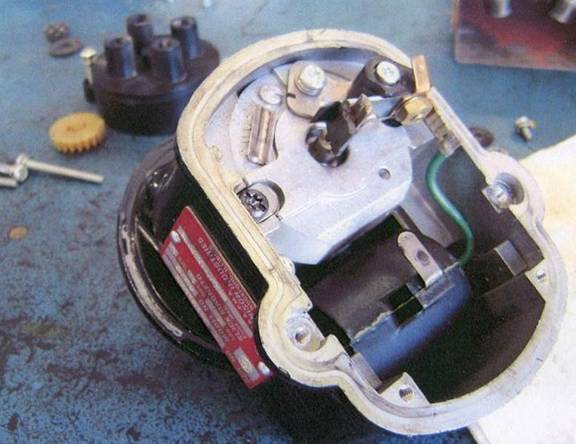What to Know BEFORE You Go
Sponsored by AirMart, Inc. – www.AirMart.com
3 Good Reasons to NOT Skip the 500 Hour Magneto Inspection
You’ve been flying your Cessna 182 quite a bit lately, and it’s now time for the annual inspection. Your plane is running great with no significant squawks, so you’re expecting an “easy” annual. You drop the plane off at the shop and you get a call the next day. “Everything looks good so far…except the magneto 500 hour inspection is due.” Ah, decision time.
The engine ran great on the last flight and the mag drops were perfect. Why should I have the A&P remove, disassemble, reassemble, and install the mags? If they’re running fine, doesn’t this just increase the risk of introducing a problem? Should I really have them do the 500 inspection?
Usually, I try to make each of my points first, and then give an answer to the opening question as the close. However, because I really want to be sure you make it to the answer, this time I’m going to answer the question first. Ok, here it is: YES! Get the 500 hour inspection done.
Now if you’re the type that can accept that answer as-is you’re finished here. Go ahead and move on to the next article. If not, then let me give you a few good reasons why you should get that 500 hour inspection done:
Reason #1: Magnetos often run great—right up to the moment they fail.
What can cause a magneto to fail without warning? Most of the time, it’s the points that fail. Over time points can get severely pitted and burned. They may still operate, but they can stick shut without warning. If the points don’t open, the magneto won’t fire. Often burned and stuck points are a symptom of a bad capacitor.
Another common cause for a sudden failure is a broken impulse coupling spring. I’ve had this failure twice on planes I was flying. Not sure what the impulse coupling is? Let me explain. The magneto generates electricity by spinning a magnet inside a coil. During start up, the magneto isn’t spinning fast enough to generate the required electrical current, so some engines drive the magneto through an impulse coupling. Inside the coupling is a coil spring which gets wound tightly by the shaft from the engine. At the correct time, the spring is released and spins the magneto very quickly to generate the necessary current flow. This is the click you hear when you turn the engine by hand. Once the engine starts, centrifugal force will cause some small weights to swing out, disengaging the spring. However, if the spring breaks, it throws off the timing of the magneto—even when the engine is running at full speed. It will cause the magneto to fire at random times and cause the engine to start kicking and backfiring.
NOTE: There are some ADs that require 500 hour inspections of the impulse coupling. You will need to confirm with your A&P if your engine / magneto combination falls into an AD compliance requirement.
Of course there are numerous other components that can cause sudden failures: plastic gears and carbon brushes that break, a failed coil, and chafed wires to name just a few.
Reason #2: Some magnetos may seem to be running great, but in reality they are not.
Sometimes the magneto is just barely generating a spark. For example, some magnetos may generate a correctly timed spark, but that spark is weak. This is something you may not notice until you try to start the engine on a cold morning.
Often, this is a timing issue. Of course the magneto must be timed to the engine, ensuring the spark fires when the piston is in the correct position. Additionally, the magneto must also be timed internally. Inside, a magnet is spinning next to a coil. This is generating a current flow that is increasing and decreasing with rotation. When the points open, it instantly stops the flow of current in the primary coil, which generates a 20,000-volt spike in the secondary coil. The timing of the points is critical. If they don’t open at the correct time, the voltage spike will be weak, thereby producing a weak spark.
The points are opened by a small plastic cam mounted on the rotating shaft. This cam will wear over time, causing the points to open late. Slick has had some problems with these cams wearing very quickly and issued a Service Bulletin to replace them.
A bleed-to-ground will also affect the quality of the spark. Sometimes the 20,000 volts will follow a path to ground instead of going out the distributor to the spark plug. This path to ground can be caused by corrosion build up, a cracked distributor, moisture, or dirt buildup inside the mag. A weak coil will also cause a weak spark.
Reason #3: Undetected moisture and corrosion may be eating away on the inside.
It’s not uncommon to open up a high time magneto and find it full of corrosion and moisture. This corrosion will just continue to eat away at the mag until it causes a complete failure. Of course, if this isn’t caught early, the magneto will be damaged beyond repair.
Generally speaking, the 500 hour inspection is not legally required. However, when you consider how vital the magnetos are to the operation of your engine and just how many problems can be hiding inside, the importance of the 500 hour inspection should be obvious. It really is best to go ahead and invest in the 500 hour magneto inspection during the annual. After all, when a problem does pop up, Murphy’s Law says it’ll likely happen on a weekend when you’re 400 miles from home and at an airport with no maintenance shop!






